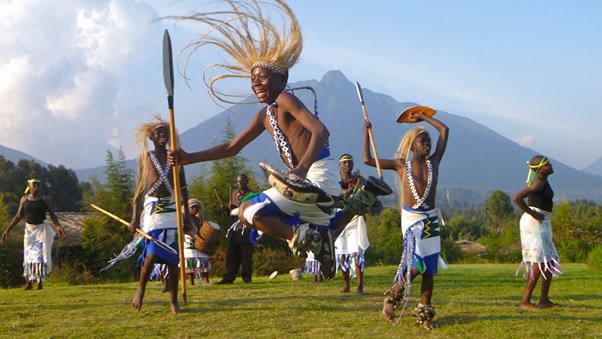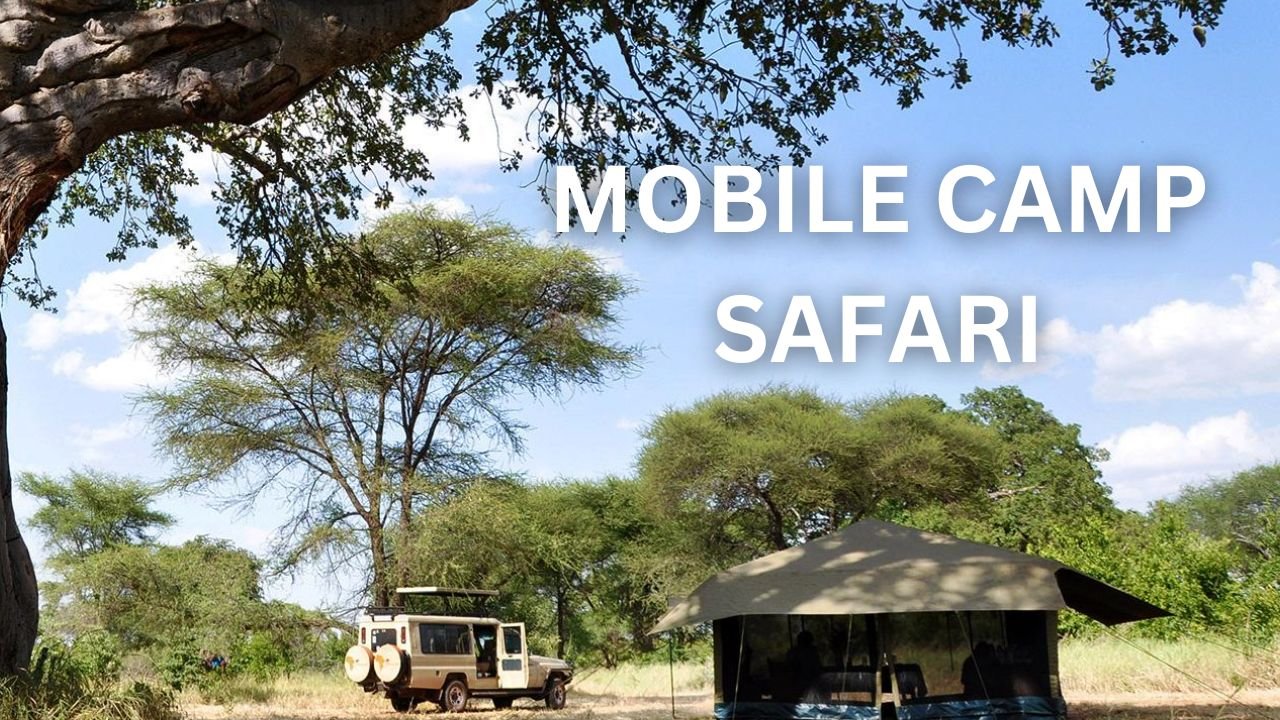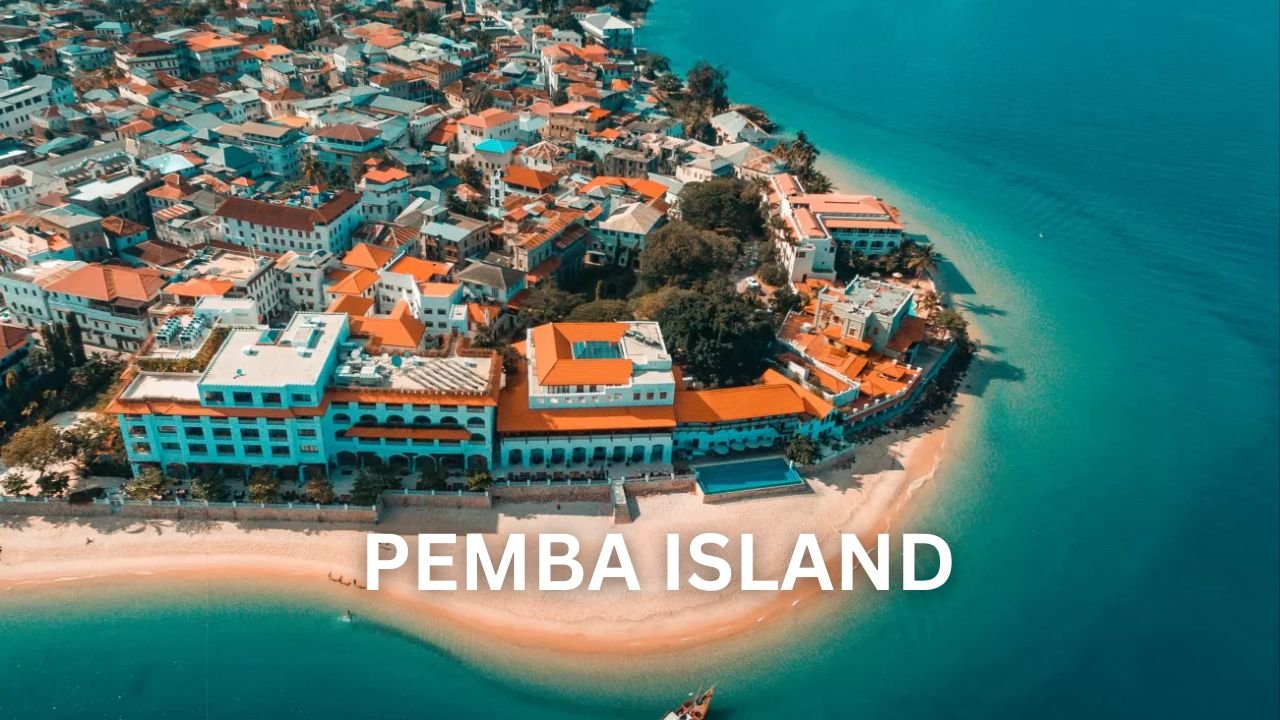All You Need to Know About Gorilla Trekking
Glossy black against the rainforest’s luminous green, this is what you’ve come to Africa to see: a family of gorillas headed by a watchful but benevolent silverback male. The efforts of your gorilla trek evaporate in an instant and, for the one enchanting hour you spend with them, an odd sense of familiarity settles on you. Young gorillas rough and tumble like wrestlers, maternal females gather in grooming groups, occasionally reprimanding the little ones, while the patriarchal silverback keeps a protective eye on the surroundings. Gorilla trekking offers one of Africa’s most profound wildlife encounters – their populations, even in protected reserves, are counted in hundreds rather than thousands. So rare are gorillas, that trackers are able to give them individual names and identify their faces and personalities easily.
Why Go Gorilla Trekking?

What to Expect
About Gorilla Trekking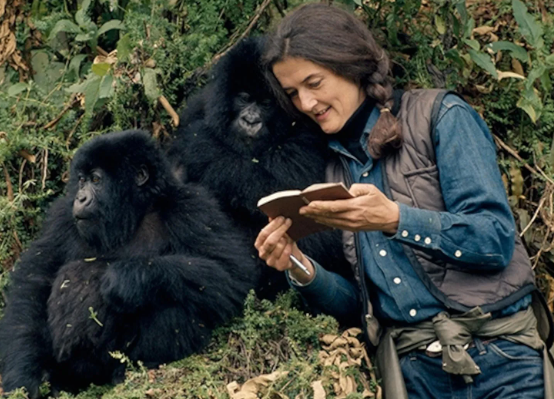 Trekking for gorillas in mountainous rain forest often means hours of hiking on steep, narrow footpaths and walking through dense jungle behind a scout who slashes a path through the foliage with a machete. You need to be at least walking fit – the guides ensure you take plenty of breaks – and properly equipped for a tough environment. We recommend broken-in hiking boots that protect your ankles, double-layered socks (cotton inners and thick outers) plus knee-high gaiters. Please be aware that gorillas are highly susceptible to human illnesses; you will not be allowed to go on a gorilla trek if you have a cold or any other contagious illness.
Trekking for gorillas in mountainous rain forest often means hours of hiking on steep, narrow footpaths and walking through dense jungle behind a scout who slashes a path through the foliage with a machete. You need to be at least walking fit – the guides ensure you take plenty of breaks – and properly equipped for a tough environment. We recommend broken-in hiking boots that protect your ankles, double-layered socks (cotton inners and thick outers) plus knee-high gaiters. Please be aware that gorillas are highly susceptible to human illnesses; you will not be allowed to go on a gorilla trek if you have a cold or any other contagious illness.
 Items I found indispensable for gorilla trekking in Uganda were gaiters, a buff and snacks for the road transfers. – Bovia, Jewel Safaris Expert
Items I found indispensable for gorilla trekking in Uganda were gaiters, a buff and snacks for the road transfers. – Bovia, Jewel Safaris Expert
When to Go Gorilla Trekking
 Uganda and Rwanda share a common climate and although gorilla trekking is considered a year-round activity, the best time to visit the rain forests is during one of the two dry seasons. The first runs from about the middle of December to the end of February and the second from early June to late September. These periods are the most comfortable for trekking, but conditions are still very humid and wet with plenty of mud (so don’t forget your gaiters!).
Rain is an essential part of the precious ecosystem in the Congo Basin’s equatorial rain forest and its seasons can be aptly described as wet, wetter and wettest. Gorilla trekking in Congo is easier during the ‘low rainfall’ season, which runs from June to September, and the ‘gentle rainfall’ season from December to February. July to August is considered the least wet and coolest time of the year.
Uganda and Rwanda share a common climate and although gorilla trekking is considered a year-round activity, the best time to visit the rain forests is during one of the two dry seasons. The first runs from about the middle of December to the end of February and the second from early June to late September. These periods are the most comfortable for trekking, but conditions are still very humid and wet with plenty of mud (so don’t forget your gaiters!).
Rain is an essential part of the precious ecosystem in the Congo Basin’s equatorial rain forest and its seasons can be aptly described as wet, wetter and wettest. Gorilla trekking in Congo is easier during the ‘low rainfall’ season, which runs from June to September, and the ‘gentle rainfall’ season from December to February. July to August is considered the least wet and coolest time of the year.
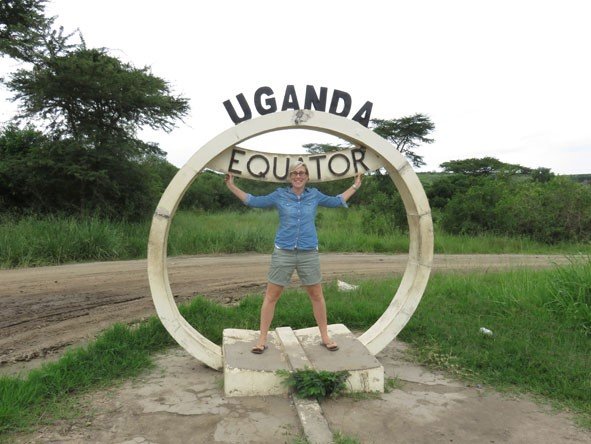 I went to Uganda in November, during the rainy season. Rain usually fell in the early morning and late afternoon. It would be a bit of a downpour and then usually stop. Remember, you’re trekking in dense forest, so if it has been raining, it takes a lot longer for everything to dry out. Bwindi is hilly so you should expect to walk up some steep inclines. The region also seemed to have more leaf coverage on the ground, so there was not as much mud but still quite slippery. – Bovia, Jewel Safaris Expert
I went to Uganda in November, during the rainy season. Rain usually fell in the early morning and late afternoon. It would be a bit of a downpour and then usually stop. Remember, you’re trekking in dense forest, so if it has been raining, it takes a lot longer for everything to dry out. Bwindi is hilly so you should expect to walk up some steep inclines. The region also seemed to have more leaf coverage on the ground, so there was not as much mud but still quite slippery. – Bovia, Jewel Safaris Expert
Traveller FAQs
Traveller FAQs Answered Will I Definitely See Gorillas?
Will I Definitely See Gorillas?
Because they are so closely monitored, and either researchers or trekkers are in touch with them every day, guides know more or less where the different families are, and you probably have a 99% chance of seeing them. Of course, there are no guarantees with wild animals and an overnight thunderstorm or an unexpected encounter with a predator may cause a troop to move unexpectedly in a completely different direction, but it’s likely that scouts will pick up their trail again soon. It is very seldom that travellers don’t find the apes during a gorilla trekking expedition.
When you do find a gorilla family, your ranger will ask you to leave everything but your camera. He will then take you close enough to observe the gorillas intimately without threatening them. There are no fences between you; only mutual respect. The gorillas are habituated to human observers and go about their natural business – foraging, grooming and napping – without fear. Indeed, the youngsters are often curious about humans and have a very playful attitude that tests the patience of their teenage gorilla babysitters. The placid nature of the gorilla family is wonderful to see, but remember that your presence is shrewdly observed by the patriarch of the family: the massive silverback male. We recommend that you spend part of the time taking photos, but at least 20 minutes just observing – you’ll come away with a far greater sense of having experienced a group of gorillas in their natural habitat.
Can I Touch Them?
No, absolutely not. Although we completely understand the instinct to want to reach out and cuddle an adorable baby. First, because they’re wild animals and thus very strong and unpredictable, you could be severely injured. Second, gorilla populations are already under severe threat from logging, poaching and human encroachment on their environment, plus they are highly susceptible to human diseases. Not only can you not interact with them, but you will have to keep a distance of at least seven metres (22 feet) at all time and, in some instances, wear a face mask. If you are ill, you will not be allowed to go on a gorilla trek, so ensure you are in excellent health before you travel and take precautions not to pick up a bug on the flight over. Remember, once you find the gorillas, you are only allowed an hour with them so as not to cause them distress. This passes by in a flash, so don’t spend all your time behind a lens: put the camera down after a few minutes and just watch them, grateful that you have the rare privilege of seeing these beasts in the wild. Do I Have to Use a Porter?
Do I Have to Use a Porter?
(Read about Roles of Porters in Gorilla Trekking)
We strongly encourage you to use a porter if you are offered their services during your gorilla trek, even if you feel you are fit enough to cope with the terrain, altitude, humidity and your daypack. For a nominal amount of money – around USD20 – you will be providing a livelihood to several inhabitants of a nearby village.
Porters are very often former poachers. Without work and the ability to earn a living within gorilla conservation, many will be forced to return to finding and capturing or killing gorillas for bush meat or the illegal wildlife-trafficking trade. The incentives offered by poaching syndicates can be very lucrative for impoverished villagers with few other ways of earning a living. It’s better to graciously accept their help and pay the fee – which will amount to a couple of coffees back home – and help ensure the continued conservation of gorillas.
Remember, every legally employed person in Africa supports seven to nine other people. There can be no successful conservation without involving people as much as possible – so the more porters you can get on board, the better!
My top tip for gorilla trekking is to make use of porters. They carry your bags, give you a push or a helping hand when the hiking gets tricky, plus you’re employing someone from the local community and encouraging them to protect the gorillas. They’re definitely worth their weight in gold. – Bovia, Jewel Safaris Expert
How Fit Do I Have to Be?
With any strenuous activity, the fitter you are, the better. But this doesn’t mean that you need to be able to complete a triathlon or bench press three times your body weight to go gorilla trekking. Trekkers will be divided into groups of similar age and fitness levels, and the oldest and least fit people will generally be allocated the gorilla family that is nearest the starting point. Don’t worry: you won’t be split up from family members or friends but – obeying the golden rule of hiking – the fastest walkers will have to slow down to the pace of the slowest so that the group stays together safely. The fittest or youngest people will be chosen to find the group furthest away. Your guides are very experienced in assessing how the group is coping and will stop when necessary for a break, to drink water, admire a view or even have a snack. Packed lunches contain water and perhaps energy-rich items like roasted cashews or peanuts, bananas, apples, chocolate bars, muffins, small sandwiches or bread rolls, and local treats like ‘rolled eggs’ – a kind of omelette eaten cold. It’s always easiest to trek in the dry season. In the wet season, the mud can make trails slippery and the trek tougher. Primates may also seek refuge from the rain in nests or trees, making them harder to find and see. Take lightweight binoculars along to really bring their antics and expressions into focus. Also, not all gorilla families will be lolling around, munching leaves and basking in the sunshine – some will be on the move. And they’re a lot better adapted to moving through their rainforest home than we are, so you’ll need to be able to keep up! Much of how strenuous the trek is depends on a combination of the terrain, vegetation and weather. I trekked in September in Rwanda and in November – the rainy season – in Uganda. The heat and humidity were worse in Uganda because it was later in the year. I did the “difficult” trek in Uganda and didn’t think it was too bad, just a steep and muddy climb back up after we saw the gorillas. In Rwanda, I did the “most strenuous” trek; it was a steeper climb than in Uganda. We did four hours of uphill climbing until we found them. I thought this was much tougher than Uganda because there were lots of thicket, few paths and a lot of walking through the forest, while Uganda was more in the open. I really enjoyed both treks and didn’t think they were too hard. One trekker battled with the altitude in Rwanda but, other than that, everyone managed with no problems at all. – Daisy, Jewel Safaris Expert
Much of how strenuous the trek is depends on a combination of the terrain, vegetation and weather. I trekked in September in Rwanda and in November – the rainy season – in Uganda. The heat and humidity were worse in Uganda because it was later in the year. I did the “difficult” trek in Uganda and didn’t think it was too bad, just a steep and muddy climb back up after we saw the gorillas. In Rwanda, I did the “most strenuous” trek; it was a steeper climb than in Uganda. We did four hours of uphill climbing until we found them. I thought this was much tougher than Uganda because there were lots of thicket, few paths and a lot of walking through the forest, while Uganda was more in the open. I really enjoyed both treks and didn’t think they were too hard. One trekker battled with the altitude in Rwanda but, other than that, everyone managed with no problems at all. – Daisy, Jewel Safaris Expert
Can Children Go Gorilla Trekking?
The minimum age for gorilla trekking in Rwanda, Uganda and Congo is 15 years. This restriction is in place due to several important factors. Children may find it challenging to remain calm if a gorilla mock charges during a trekking expedition. While wild mountain gorillas rarely charge, it can happen if they perceive anyone in the trekking group as a threat. However, an experienced and calm tracker can often deter a charging gorilla. Unfortunately, a child may become terrified, scream, or be inclined to run when faced with the intimidating bark of a 180-kilogram (397-pound) silverback. In such situations, a charging gorilla will typically give chase to a running tourist. Children also pose health risks during gorilla trekking, as their developing immune systems make them more susceptible to contagious diseases like flu. Since these diseases can be transmitted to gorillas, the consequences can be severe and potentially fatal. Additionally, children’s limited stamina could make it arduous for them to complete the entire trek. This is particularly relevant in Rwanda’s Volcanoes National Park and Uganda’s Bwindi Impenetrable Forest, where gorilla trekking involves traversing steep mountain slopes and demanding terrain. The activity requires a certain level of fitness and determination, which mature travellers are more likely to possess. Adults are generally better prepared to handle challenges like muddy trails, insects, thick forests and steep inclines. There are strict regulations set for gorilla trekking. These rules are designed to protect the gorillas, the trackers and guides, as well as trekking tourists. They include maintaining a minimum distance of seven metres (22 feet), following instructions from park guides, speaking in low tones, avoiding direct eye contact with gorillas, and never attempting to touch them. Compliance with these regulations is crucial to ensure the well-being of the primates and the safety of trekking groups. If you are travelling with youngsters, we recommend booking your stay at a lodge that offers childminding services, special programs for kids, or even safe and child-friendly forest walks.Ready to Start Planning Your Gorilla Trekking Adventure?
Gorillas are critically endangered and trekking is carefully regulated in Africa’s gorilla parks. Permits are both costly and difficult to secure and cannot be held on a provisional basis. Travelling to such remote destinations and ensuring the best chances for a successful gorilla trek requires the kind of direct experience and local knowledge that you get from a Jewel Safaris Expert. Book a Trip Some of our Packages UGANDA TOUR PACKAGESUGANDA TRAVEL GUIDE
RWANDA TOUR PACKAGES
RWANDA NATIONAL PARKS
RWANDA TRAVEL INFORMATION
